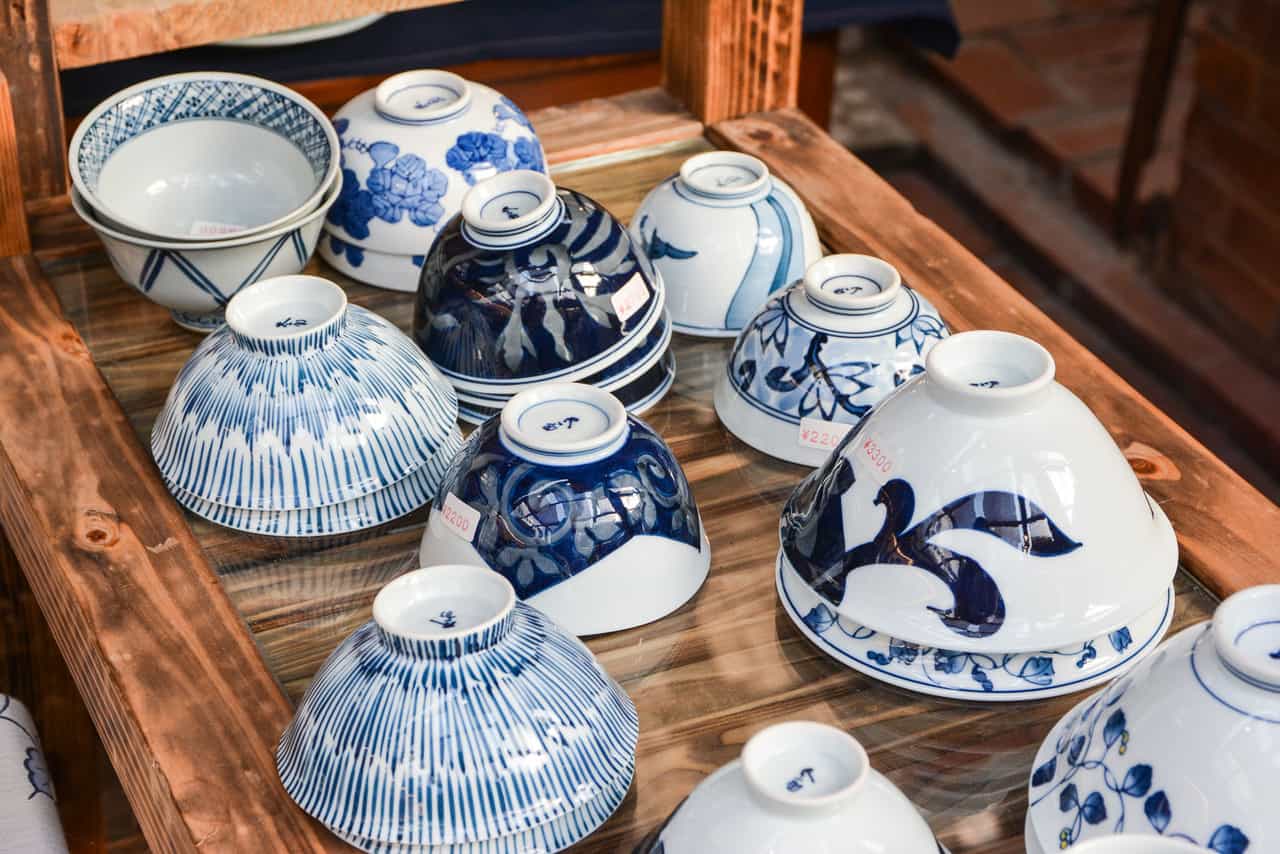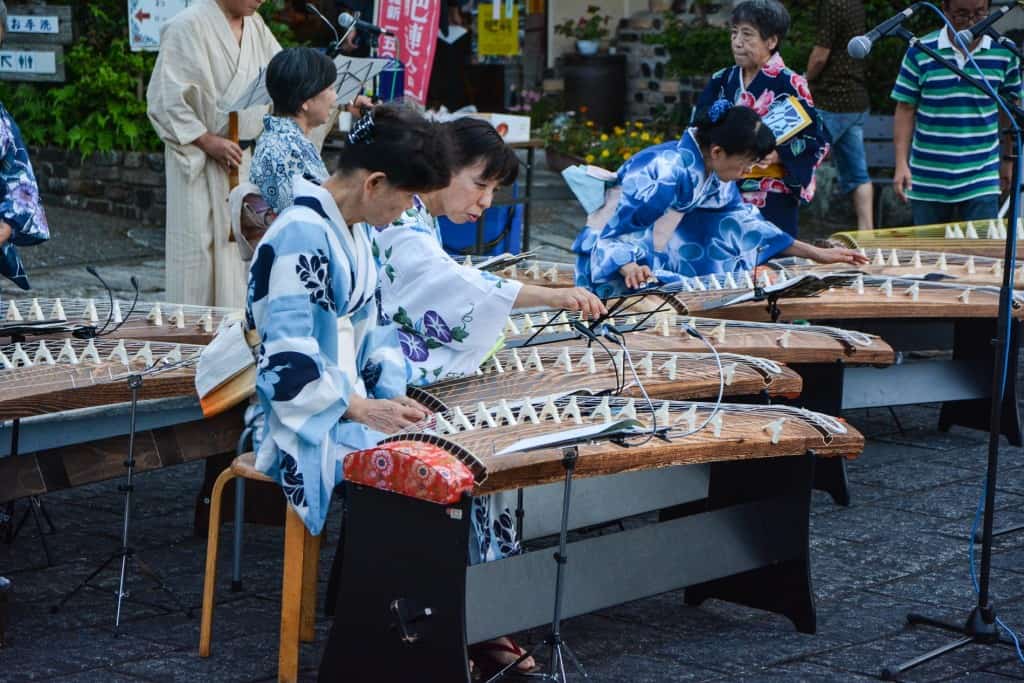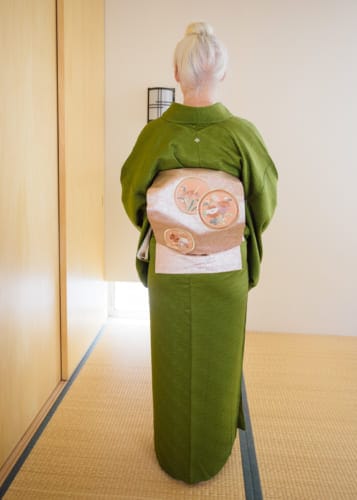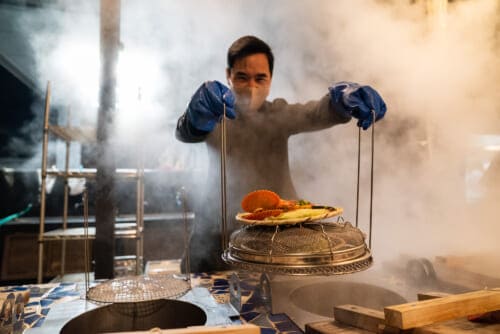Saga prefecture in Kyushu is famous for its pottery. One of the best known is Imari-yaki (伊万里焼) in the Imari area. The Imari town and its village Okawachiyama (大川内山) are among the essential destinations to visit if you are in the region. Every year, a festival of wind bells is held during the summer in the village. All the locals hang these little porcelain objects in the narrow streets of the village.
Imari Pottery and Japanese Porcelain
The pottery of Imari is very distinct and unique compared to other pottery created in Japan. The drawings often have Chinese and Korean influences, of which the three main types are Koimari, Kakiemon, and Nabeshima. Imari-yaki porcelain is also very expensive because of its historical significance and its pottery status both nationally and internationally.
Visit the Pottery Village of Okawachiyama
The village of Okawachiyama, easily accessible from Imari, is located in the hills, surrounded by beautiful lush mountains! The village is charming and has small alleys that allow visitors to walk along the beautiful canal and discover the local pottery in the beautiful shops of the village. Visitors can even see the ovens where the pottery is fired. The village is considered to be one of the cradles of Japanese pottery.

The beautiful porcelain in blue ! 
A beautiful boutique at the beginning of this village
You will also see many beautiful brick chimneys, which are characteristic of pottery villages.

The main street of the village which rises in the heights 
Local houses along the canal
In the village of Okawachiyama almost everywhere you will find pottery objects: signs, decorative plates, porcelain decorating the bridge. It is quite a sight to see. As you stroll around, you will see many traditional ovens.

The molds 
The ovens
When Does the Wind Bells Festival of Imari Happen?
Here I am in the village of Okawachiyama for this festival of wind bells (furin in Japanese) which takes place every year from mid-June until the end of August. There are hundreds of little bells which are hung up all over the place in the village. Their sound is wonderful, and it is very relaxing to walk in the village of pottery while listening to the sweet tinkling of the bells! All of the bells are made of ceramic and have different designs!
These small bells have a history in Japanese daily life, especially during hot and humid summers. Before air conditioners, people tried, by all means, to feel less hot during the humid summers. When a little wind passed in front of the bells, the clear and soft sound gave the feeling of freshness.

The Lantern Festival
I made it to the village in time for the lantern festival. During the evening, for the festival, they decorate the village streets, hanging lanterns on the buildings, in the central square, and even on the river bank. In total, around 3000 lanterns are used in decoration! Unfortunately, I had to leave before nightfall, but I enjoyed the festivities planned until around 4:30 pm, when I left. I still managed to see various concerts and other festive activities. To eat and enjoy local meals, buy tokens (made with Imari-Yaki porcelain) and go to the outlets. Many people wore traditional clothes in the village. It was wonderful to see people dressed in bright and colorful yukata!

The central square is ready to be illuminated at nightfall! 
Though I couldn’t see, this is the lantern festival in the night ! 
Yukatas are another way to help stay cool during Japan’s hot, summer months.

The banks of the river filled with lanterns! 
This guy played the music with only these ceramics ! 
Along the street of this village

The little tokens made by Imari-yaki! 

An concert at the place of village
Okawachiyama is, therefore, a village that is well worth visiting and not only for lovers of pottery and ceramics but also for the beauty of the village, which has kept its authentic and traditional character !!!

Girls in colourful patterned yukatas are everywhere 
Sake Tasting ! 
Several music concerts were held at the place. 
The locals started to set up the lanterns.
How to Get to Imari Wind Bell Festival:
- By bus: take a bus to Okawachiyama from Imari Mae Station. Get off the bus at the final stop. It takes 15 minutes from Imari
- By car: 10 minutes by car from Imari. Free parking is available on site.
Need Help? Contact the Saga Travel Call Center
There is 24/7 assistance at the Saga Travel Call Center and is available in English, French, German, Italian, Spanish, Portuguese, Russian, Thai, Korean, Chinese (Mandarin & Cantonese), Vietnamese and Indonesian.
Translated by: Aika Ikeda
Sponsored by Saga Prefectural Tourism Federation












No Comments yet!